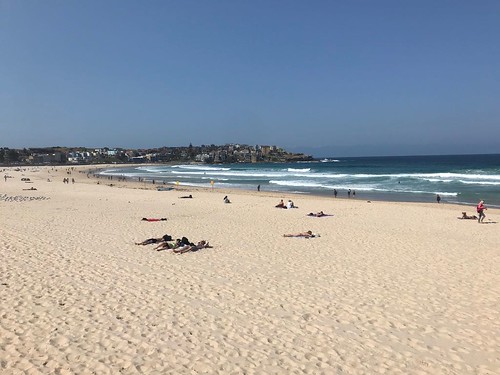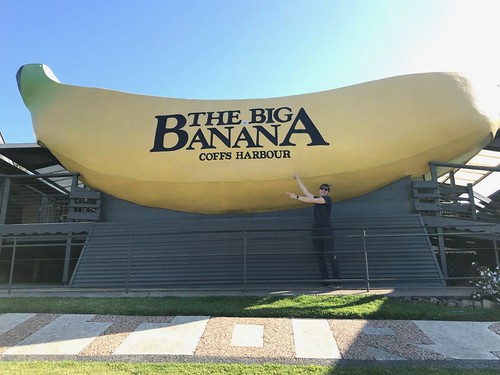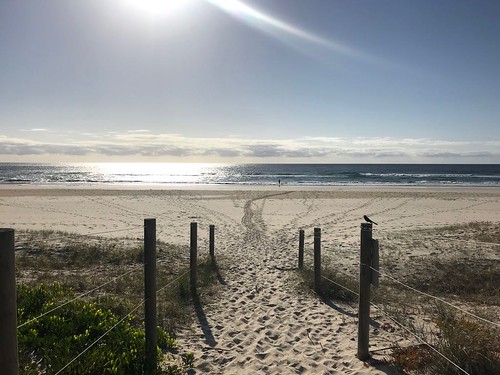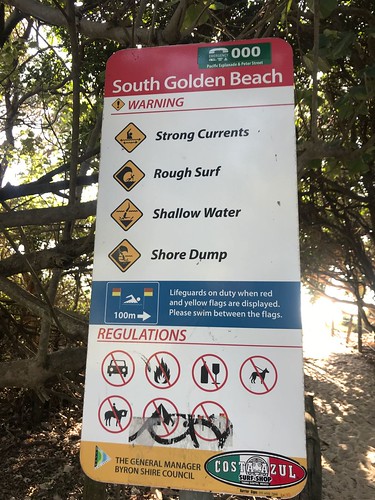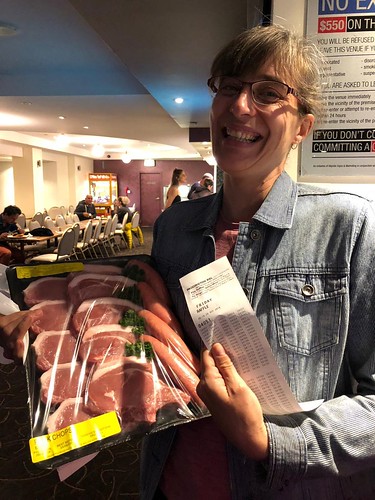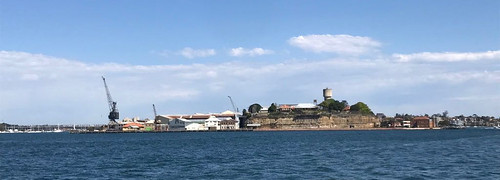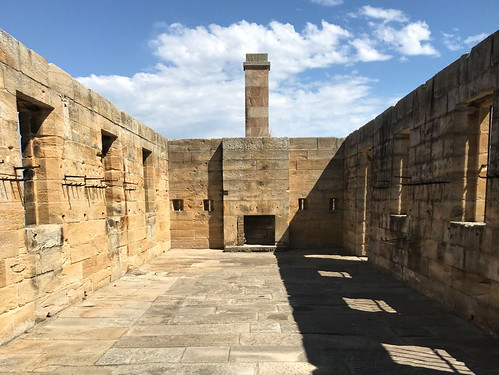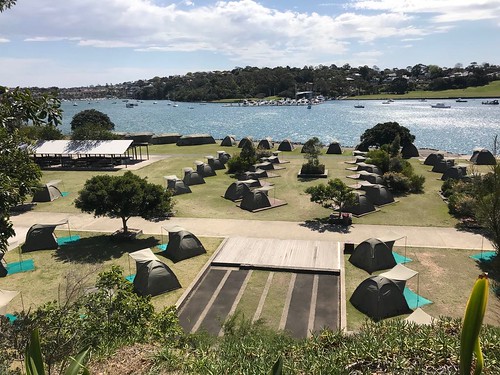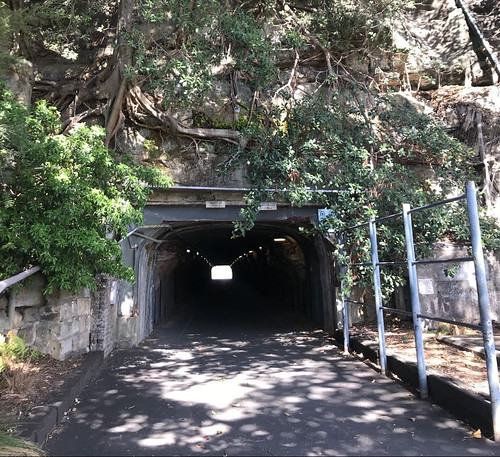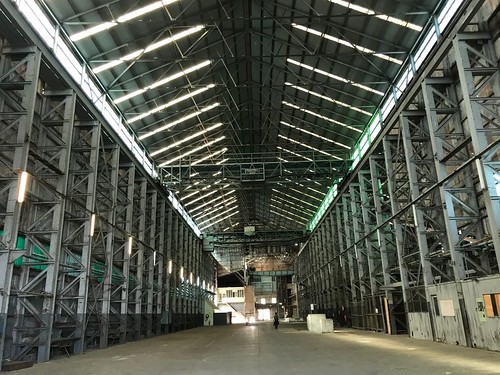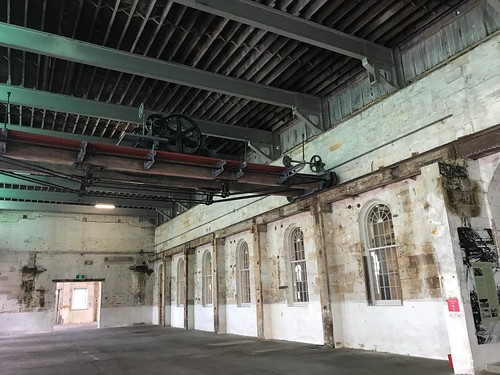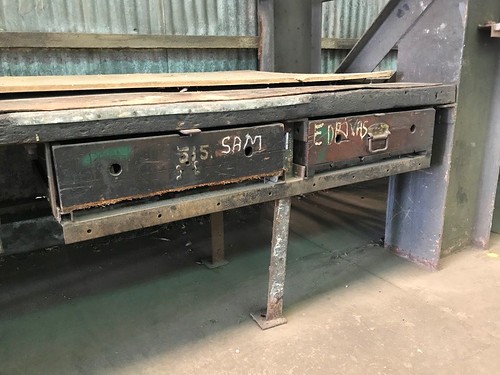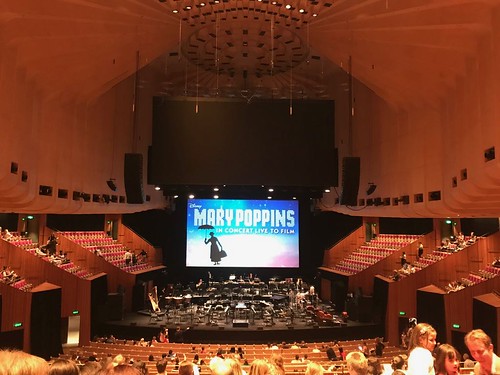There was a time in the late 1980’s that the more mature Go Stay Work Play Live Reader may recall. It was shortly after the release of the movie “Crocodile Dundee”, when a tide of what I can only describe as Australiamania swept across North America. You couldn’t swing a didgeridoo without hitting a can of Foster’s lager or hearing some twat spout out a “G’day mate” while brandishing a boomerang. I found the whole business really boring. Now that I’ve actually been to Australia, I can confidently say that whole Australiamania business genuinely was really boring, but that Australia itself is pretty fantastic. Sure, at the time I visited I was exhausted with Jakarta in particular, Indonesia in general, and the basic concept of Asia as a whole. Plus anywhere I didn’t have to endure 32 degree temperatures and one million percent humidity was bound to be popular. And you really can’t overstate how much easier it is getting on in a place where they speak a passingly understandable dialect of English. But all that would be true in Minot, North Dakota or Sudbury, Ontario and Australia is definitely more fun than either of those places.
Before my Oz Adventure I had the supreme pleasure of re-reading Bill Bryson’s book about the place, “In a Sunburned Country”. It’s perfectly excellent and I recommend it highly, especially to Karen, who persists in claiming that she hates Bill Bryson’s writing, which is one of the things we have to agree to disagree on. (Other such topics include my staunch belief in the inherent interestingness of gears and industrial machinery in general, and her slight obsession with jewellery of all kinds.) One of the things Bryson goes on about at some length is the many and varied ways it’s possible to die in Australia. And I’m not talking here about the usual western civilisation killers like heart disease or diabetes or say, being hit by a bus. No, Australia has a lot more interesting ways of bumping you off than that.
It’s relatively common knowledge that the wildlife in Australia is surpassingly deadly. I had to keep reminding myself of that while I was there because it reminded me a lot of Canada so it was easy to get complacent. There’s a “we’re all Commonwealth here” feeling with an appropriate smattering of war memorials and familiar place names and pictures of the Queen, and with the more relaxed vibe I associate with Canada rather than with the mother country. Then again, because Canada is squashed up against that cultural juggernaut to the south, we ended up with baseball and "American" football and hot dogs. Whereas Australia is so ridiculously isolated that even after the colonial influence faded they carried on with cricket and rugby and even managed to evolve their own Australian Rules version of football (it’s like the Madagascar of field sport - an evolutionary one-off). Still, Australia feels familiar, especially for me who can speak fluent baseball and just about keep up when someone starts prattling about square leg and silly mid off.
The size of Australia also means it’s geographically spread out in a way that’s a lot like home. There are wide streets and long highways and a general sense that there’s no need to bunch up. Case in point: I was invited on a road trip up the east coast wherein the plan was to leave Sydney Monday morning and arrive near Byron Bay in time for dinner. It’s a distance of about 900km, and true proof that Canadians and Australians really are soulmates because when I was presented with this plan my instinctive thought was, “Yeah, that sounds about right.” In England the notion of traveling 900km in a day would be greeted with howls of derision and a detailed explanation that merely to get from Central London to Reading would take at least a day, and really one should be prepared to overnight in Slough, just in case.
But back to how Australia can kill you. Everyone is probably aware that the spiders and snakes in Australia are really not to be trifled with. Of the world’s ten most poisonous snakes, ALL are Australian. The native funnel-web spider is the world’s most toxic and a nip from the redback spider will also definitely make you late for dinner. One of my hosts in Sydney, in a typically blasé Australian way, told me that these days they tend not to give you anti-venom for some spider bites. “They’ll just see how you get on at first” she said, which was not reassuring. Then again, the typical Aussie would probably be pretty unnerved by the notion of digging a car out of a four foot snowbank in -30 degree blizzard, so I guess we all have our blind spots.
In any case, after that lovely 900k trip up the coast, including a mandatory detour for a photo op at The Big Banana, we fetched up at our home for the night and had a lovely dinner of lamb and talked about what the next day’s activities should be.
Our hosts suggested there were some nice nature walks in the area and even handed over a small guide book that seemed to be comprised of equal parts walking directions and careful notes on things you should really avoid encountering while walking. And even though I thought I was pretty au fait with the lavishly lethal nature of the country, I was still alarmed when the first entry I saw was for the Giant Stinging Tree. A tree that can sting you? That’s just offside. Needless to say, I declined to go for a walk in the woods.
What we did instead was spend the day at Currumbin Wildlife Sanctuary, which was great. Apparently many Australians of a certain age have traumatic memories of being taken to Currumbin as a child and being subjected to the “lorikeet feeding” ordeal, which is a particular form of child torture that involves being equipped with bird feed and then covered in an alarming number of lorikeets - a type of small, colourful parrot - while screaming bloody murder and having one’s photo taken. I wisely skipped the lorikeet feeding, but I did get to pet a kangaroo and see koalas, Tasmanian devils, dingos, crocodiles AND a spiny echidna! Even the lorikeet-scarred Paula admitted that modern Currumbin was an excellent day out. Sure, it was kind of cheating to see the animals in captivity (the “koala crossing” signs we saw on the highway were clearly hoaxes) but for a kid from Canada it was pretty great.
After Currumbin we ended up in South Golden Beach, at another house generously provided by the previously mentioned network of Australian friends and acquaintances. And that’s when I had to remind myself again about Australian wildlife, because that night as I was getting ready to brush my teeth I dropped my toothbrush beside the sink. When I bent down to pick it up, I saw it had landed right next to an occupied spider web. At first I took no notice. Then I took a mental step back. And then I took a physical step back. And then I called Paula, because you can’t beat an Australian when it comes to identifying deadly wildlife. She came to check it out, and was generously derisive when she saw the beast, which was apparently microscopic and harmless, but my policy is you can’t be too careful in Australia. And Paula can laugh all she wants but she better not call me the next time she needs someone to dig her out of a snowdrift, that’s all I’m saying.
The next morning I got up for a run and was struck - and not for the first time - with the surpassing beauty and ubiquity of Australian beaches, because this is what was at the end of the block:
Aside from the spider in the bathroom, the house at South Golden Beach was fantastic. However, lest we get too misty-eyed about the beach itself, remember that it’s not just things on land that can kill you in Australia. The sea is home to a lively variety of deadliness. Of course there are the sharks and the stingrays. And don’t forget the tiny-but-murderous blue-ringed octopus and the famously painful box jellyfish. Yes, the waters around Australia are full of deadly delights. But that’s not all. Even if the ocean were utterly devoid of life you’d still want to keep your wits about you when you go for a dip.
When I decided I wanted to go for a quick swim at South Golden, Paula cautioned me. “It’s pretty rippy out there” she said, meaning it looked like there could be a strong rip current. I’m still not really sure what that means, but it seems significant that they call it a RIP current and not, say, a joyful current or a mellow current or fluffy bunny current. Paula tried to explain it to me - something about how the waves were breaking creating a current that can pull you far out from shore. She told me not to go in too deep. When I pressed her about how deep was too deep - Chest? Waist? Ankles? - she sighed and said, “Why don’t I just come with you?” (Subtext: “So I can video you being pulled out towards New Zealand and give the Coast Guard rough coordinates.") Like I said: even the water can kill you. For the record, I did go for a very short swim and didn’t get sucked into an international shipping lane or fatally stung or have any appendages bitten off.
In fact, the closest I came to snuffing it was when Paula tried to kill me with red wine on our last night at South Golden Beach. Then again, that wasn’t Australia’s fault. And I didn’t actually come that close to death, I only prayed for it fervently when I woke up the next morning. Which is why it’s all the more admirable that after I’d been delivered to the airport for the short flight back to Sydney, survived the flight, schlepped my things back to the guest room, and had a short but very very very necessary nap, I managed to rouse myself in time to go out for what turned out to be a perfectly quintessential Aussie evening. My lovely hosts dragged me out to the Returned Services League Club at Paddington (not that Paddington). The RSL is the Australian equivalent of the Canadian Legion - a club nominally for current and former members of the armed services. They're all over Australia that serve food and cheap alcohol and usually have sports betting and other gambling, and maybe a dance floor. Membership is open to anyone, and entitles you to even cheaper beer and extra chances at the many many draw prizes, and profits support the aforementioned servicemen and women.
The trip that night was somewhat calculated, as we'd planned a barbecue for my last day in Australia, and Friday night at the Paddo RSL is Meat Tray Night! What better excuse for a night out than a chance to drink cheap beer, watch Australian Rules Football and try to win a meat tray for the barbie? Despite my fragile state I did manage to enjoy a couple of beers and had a very credible seafood basket. And Nick did his best to explain Aussie Rules Football to me. As far as I can tell, it involves large men running around on a pitch approximately the size of Wales in very tight shorts. There’s a ball that looks like a rugby ball and you can run with it (for a while) or kick it but you can’t throw it. You can, however, do a pseudo-volleyball-bump thing to pass it to someone else. To score you have to kick the ball between a set of four posts, which makes the whole field look a bit like a Quidditch pitch. It’s actually quite fun to watch. It's fast and rough and the action is continuous, so it’s quite like hockey in a way.
The main event though, was the meat draw! There were more that 20 different meat trays in the cooler so early winners could choose from steaks, lamb, whole chickens, roasts, sausages, chops, and various other treats. Our table spent $60 on tickets, so we were getting quite nervous as the night wore on and we were left empty-handed. And then finally, with only three trays left (including the dreaded breakfast tray which was really just sausage, bacon and a dozen eggs) at last our number came up!
And so ended the perfect Australian evening. I had beer and deep-fried seafood at the Returned Services Club. I watched the footy. And I won a meat tray. All while hungover.
And that was my vacation in Australia. I think you'll all agree that basically, I nailed it.
Bondi Beach. And apologies to Minot and Sudbury, but let’s be real here.
It’s relatively common knowledge that the wildlife in Australia is surpassingly deadly. I had to keep reminding myself of that while I was there because it reminded me a lot of Canada so it was easy to get complacent. There’s a “we’re all Commonwealth here” feeling with an appropriate smattering of war memorials and familiar place names and pictures of the Queen, and with the more relaxed vibe I associate with Canada rather than with the mother country. Then again, because Canada is squashed up against that cultural juggernaut to the south, we ended up with baseball and "American" football and hot dogs. Whereas Australia is so ridiculously isolated that even after the colonial influence faded they carried on with cricket and rugby and even managed to evolve their own Australian Rules version of football (it’s like the Madagascar of field sport - an evolutionary one-off). Still, Australia feels familiar, especially for me who can speak fluent baseball and just about keep up when someone starts prattling about square leg and silly mid off.
The size of Australia also means it’s geographically spread out in a way that’s a lot like home. There are wide streets and long highways and a general sense that there’s no need to bunch up. Case in point: I was invited on a road trip up the east coast wherein the plan was to leave Sydney Monday morning and arrive near Byron Bay in time for dinner. It’s a distance of about 900km, and true proof that Canadians and Australians really are soulmates because when I was presented with this plan my instinctive thought was, “Yeah, that sounds about right.” In England the notion of traveling 900km in a day would be greeted with howls of derision and a detailed explanation that merely to get from Central London to Reading would take at least a day, and really one should be prepared to overnight in Slough, just in case.
But back to how Australia can kill you. Everyone is probably aware that the spiders and snakes in Australia are really not to be trifled with. Of the world’s ten most poisonous snakes, ALL are Australian. The native funnel-web spider is the world’s most toxic and a nip from the redback spider will also definitely make you late for dinner. One of my hosts in Sydney, in a typically blasé Australian way, told me that these days they tend not to give you anti-venom for some spider bites. “They’ll just see how you get on at first” she said, which was not reassuring. Then again, the typical Aussie would probably be pretty unnerved by the notion of digging a car out of a four foot snowbank in -30 degree blizzard, so I guess we all have our blind spots.
In any case, after that lovely 900k trip up the coast, including a mandatory detour for a photo op at The Big Banana, we fetched up at our home for the night and had a lovely dinner of lamb and talked about what the next day’s activities should be.
More evidence that Canadians and Australians are alike. We both love a giant thing by the side of a road. Sadly, we missed the Giant Prawn.
What we did instead was spend the day at Currumbin Wildlife Sanctuary, which was great. Apparently many Australians of a certain age have traumatic memories of being taken to Currumbin as a child and being subjected to the “lorikeet feeding” ordeal, which is a particular form of child torture that involves being equipped with bird feed and then covered in an alarming number of lorikeets - a type of small, colourful parrot - while screaming bloody murder and having one’s photo taken. I wisely skipped the lorikeet feeding, but I did get to pet a kangaroo and see koalas, Tasmanian devils, dingos, crocodiles AND a spiny echidna! Even the lorikeet-scarred Paula admitted that modern Currumbin was an excellent day out. Sure, it was kind of cheating to see the animals in captivity (the “koala crossing” signs we saw on the highway were clearly hoaxes) but for a kid from Canada it was pretty great.
I could have paid for a photo op cuddling a koala, but I decided to spend my money on seafood and beer. I have no regrets.
The next morning I got up for a run and was struck - and not for the first time - with the surpassing beauty and ubiquity of Australian beaches, because this is what was at the end of the block:
South Golden Beach. One of a countless string of stunning beaches along Australia’s east coast. It’s a wonder anyone gets anything done over there.
I only understand about half of what this sign is saying, but the strong inference here is that even the water can kill you.
In fact, the closest I came to snuffing it was when Paula tried to kill me with red wine on our last night at South Golden Beach. Then again, that wasn’t Australia’s fault. And I didn’t actually come that close to death, I only prayed for it fervently when I woke up the next morning. Which is why it’s all the more admirable that after I’d been delivered to the airport for the short flight back to Sydney, survived the flight, schlepped my things back to the guest room, and had a short but very very very necessary nap, I managed to rouse myself in time to go out for what turned out to be a perfectly quintessential Aussie evening. My lovely hosts dragged me out to the Returned Services League Club at Paddington (not that Paddington). The RSL is the Australian equivalent of the Canadian Legion - a club nominally for current and former members of the armed services. They're all over Australia that serve food and cheap alcohol and usually have sports betting and other gambling, and maybe a dance floor. Membership is open to anyone, and entitles you to even cheaper beer and extra chances at the many many draw prizes, and profits support the aforementioned servicemen and women.
The trip that night was somewhat calculated, as we'd planned a barbecue for my last day in Australia, and Friday night at the Paddo RSL is Meat Tray Night! What better excuse for a night out than a chance to drink cheap beer, watch Australian Rules Football and try to win a meat tray for the barbie? Despite my fragile state I did manage to enjoy a couple of beers and had a very credible seafood basket. And Nick did his best to explain Aussie Rules Football to me. As far as I can tell, it involves large men running around on a pitch approximately the size of Wales in very tight shorts. There’s a ball that looks like a rugby ball and you can run with it (for a while) or kick it but you can’t throw it. You can, however, do a pseudo-volleyball-bump thing to pass it to someone else. To score you have to kick the ball between a set of four posts, which makes the whole field look a bit like a Quidditch pitch. It’s actually quite fun to watch. It's fast and rough and the action is continuous, so it’s quite like hockey in a way.
The main event though, was the meat draw! There were more that 20 different meat trays in the cooler so early winners could choose from steaks, lamb, whole chickens, roasts, sausages, chops, and various other treats. Our table spent $60 on tickets, so we were getting quite nervous as the night wore on and we were left empty-handed. And then finally, with only three trays left (including the dreaded breakfast tray which was really just sausage, bacon and a dozen eggs) at last our number came up!
Behold the winner! Pork chops, pork steaks and pork sausages for lucky number 4169! Especially cherished because I’d spent the previous six months in a pork-hostile environment.
And so ended the perfect Australian evening. I had beer and deep-fried seafood at the Returned Services Club. I watched the footy. And I won a meat tray. All while hungover.
And that was my vacation in Australia. I think you'll all agree that basically, I nailed it.

